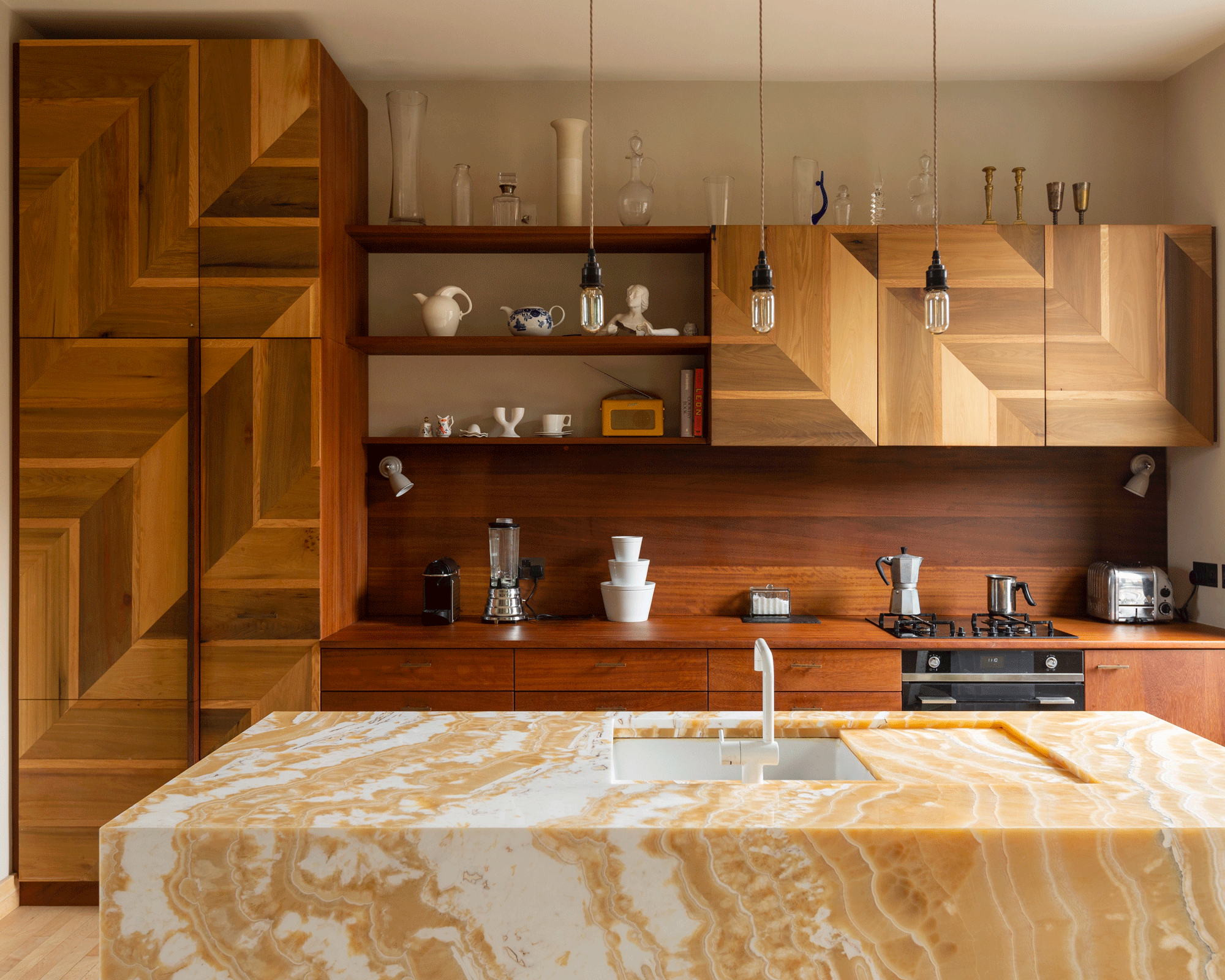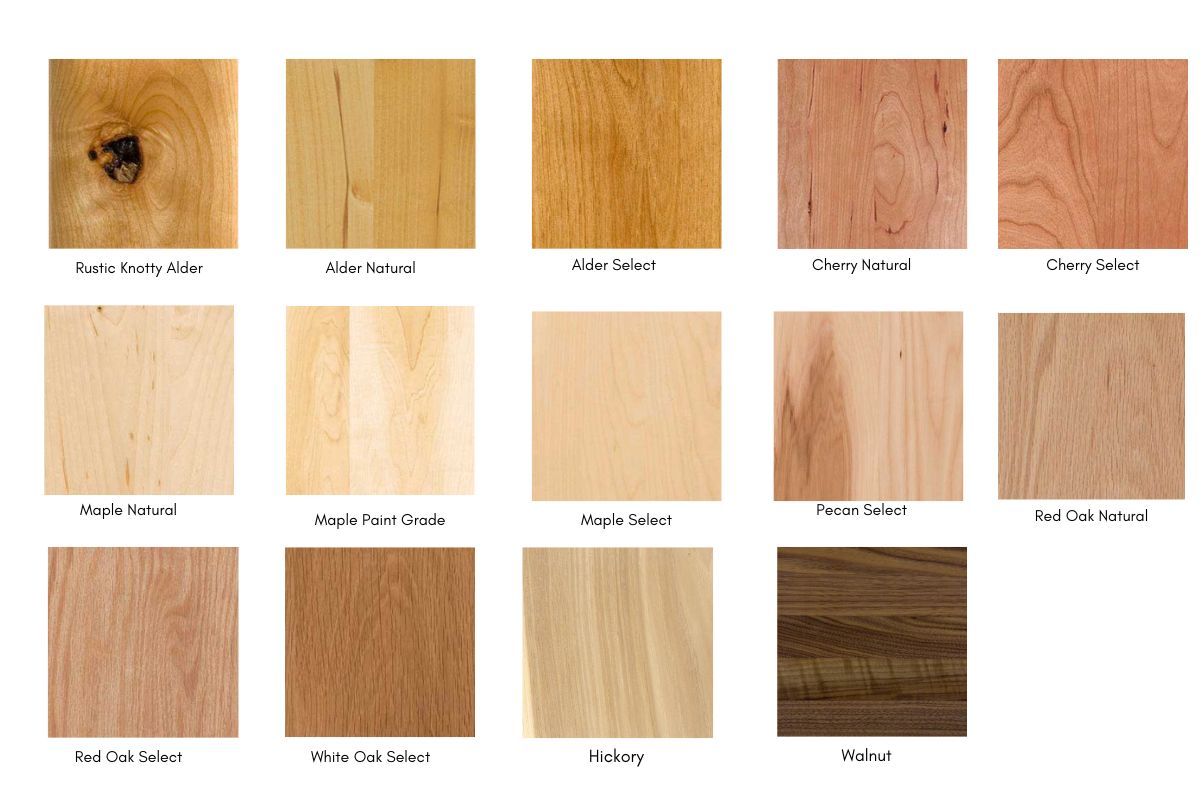Sustainable and Eco-Friendly Options: Non Wood Kitchen Cabinet Options

Choosing sustainable kitchen cabinets is a responsible choice that minimizes environmental impact while creating a stylish and functional space. Traditional wood cabinets often involve deforestation, resource depletion, and harmful chemical treatments, making sustainable alternatives a compelling choice.
Sustainable Materials for Kitchen Cabinets
Sustainable materials offer a range of benefits, including reduced environmental impact, renewable resources, and durability. Here are some examples:
- Bamboo: A rapidly renewable resource, bamboo is a strong and versatile material. Its natural antibacterial properties make it ideal for kitchen environments. It’s also lightweight and requires less processing than traditional wood, resulting in a lower carbon footprint.
- Recycled Plastic: Recycled plastic can be transformed into durable and water-resistant cabinet materials. This process diverts waste from landfills and reduces the demand for virgin materials. Recycled plastic cabinets often come in various colors and finishes, offering design flexibility.
- Reclaimed Wood: Using reclaimed wood salvaged from old buildings or structures reduces the need for new lumber harvesting. Reclaimed wood often has unique character and patina, adding a rustic charm to kitchens.
- Sustainable Hardwood: Some hardwood species are managed sustainably, ensuring responsible forest management practices. Look for certifications like the Forest Stewardship Council (FSC) to guarantee the wood’s origin and environmental impact.
Benefits of Sustainable Cabinet Options, Non wood kitchen cabinet options
Choosing sustainable cabinets contributes to a healthier planet and promotes responsible resource management. Here are some key benefits:
- Reduced Deforestation: Sustainable materials often rely on renewable resources or recycled materials, minimizing the need for deforestation and habitat loss.
- Lower Carbon Footprint: Sustainable cabinet materials often require less energy and resources to produce, resulting in a lower carbon footprint compared to traditional wood cabinets.
- Improved Indoor Air Quality: Sustainable materials are less likely to emit harmful volatile organic compounds (VOCs), contributing to a healthier indoor environment.
- Durability and Longevity: Sustainable materials are often durable and long-lasting, reducing the need for frequent replacements and minimizing waste over time.
Environmental Impact of Different Cabinet Materials
Here is a table comparing the environmental impact of various cabinet materials:
| Material | Renewable/Recycled | Carbon Footprint | Durability | Indoor Air Quality |
|---|---|---|---|---|
| Traditional Hardwood | Not Renewable | High | High | Moderate |
| Bamboo | Renewable | Low | High | Excellent |
| Recycled Plastic | Recycled | Low | High | Excellent |
| Reclaimed Wood | Recycled | Low | High | Moderate |
Durability and Maintenance

Choosing the right cabinet material is crucial for both aesthetic appeal and longevity. Non-wood options offer a diverse range of characteristics, impacting their durability and maintenance needs. This section will compare the durability of popular non-wood cabinet materials, such as metal, laminate, and acrylic, and delve into their respective maintenance requirements.
Durability of Non-Wood Cabinet Materials
The durability of cabinet materials is determined by their resistance to scratches, dents, moisture, heat, and stains.
- Metal: Metal cabinets are highly durable and resistant to scratches, dents, and moisture. They are also heat-resistant and can withstand high temperatures. Stainless steel is a popular choice due to its sleek appearance and ease of cleaning. However, metal can be prone to fingerprints and watermarks, requiring regular cleaning.
- Laminate: Laminate cabinets offer good durability at an affordable price. They are resistant to scratches, dents, and moisture, making them suitable for high-traffic areas. However, laminate can be susceptible to heat damage and may chip or peel over time.
- Acrylic: Acrylic cabinets are known for their high gloss finish and sleek appearance. They are resistant to scratches, dents, and moisture, but can be susceptible to heat damage. Acrylic surfaces are also more prone to scratches than metal or laminate.
Maintenance Requirements
Each cabinet material requires specific cleaning and repair techniques.
- Metal: Metal cabinets can be cleaned with mild soap and water. Avoid abrasive cleaners, as they can damage the surface. For stainless steel, use a specialized stainless steel cleaner to prevent streaks and watermarks. Minor dents or scratches can be repaired using a metal filler.
- Laminate: Laminate cabinets can be cleaned with a damp cloth and mild soap. Avoid using abrasive cleaners or harsh chemicals, as they can damage the surface. Chips or peels can be repaired using a laminate repair kit.
- Acrylic: Acrylic cabinets can be cleaned with a damp cloth and mild soap. Avoid using abrasive cleaners or harsh chemicals, as they can scratch the surface. Minor scratches can be buffed out using a polishing compound.
Lifespan of Non-Wood Cabinet Materials
The lifespan of non-wood cabinets depends on the quality of the materials and the level of maintenance.
- Metal: Metal cabinets can last for decades with proper care. Stainless steel cabinets are known for their longevity and can withstand heavy use.
- Laminate: Laminate cabinets can last for 10-15 years with proper care. However, they are susceptible to wear and tear, especially in high-traffic areas.
- Acrylic: Acrylic cabinets can last for 10-15 years with proper care. However, they are more prone to scratches and dents than metal or laminate.
Durability and Maintenance Comparison Table
| Material | Durability | Maintenance | Lifespan |
|---|---|---|---|
| Metal | High resistance to scratches, dents, moisture, and heat | Requires regular cleaning with mild soap and water. Avoid abrasive cleaners. | Decades with proper care. |
| Laminate | Good resistance to scratches, dents, and moisture. Susceptible to heat damage. | Clean with a damp cloth and mild soap. Avoid abrasive cleaners. | 10-15 years with proper care. |
| Acrylic | Resistant to scratches, dents, and moisture. Susceptible to heat damage and scratches. | Clean with a damp cloth and mild soap. Avoid abrasive cleaners. | 10-15 years with proper care. |
Aesthetic Considerations

Non-wood kitchen cabinets offer a wide range of aesthetic possibilities, allowing homeowners to achieve diverse styles and personalize their kitchens to match their preferences. The materials used, finishes applied, and design elements chosen significantly influence the overall visual appeal of the space.
Cabinet Styles and Finishes
The choice of material directly influences the available styles and finishes for non-wood cabinets. While wood cabinets traditionally offer a vast selection of wood species, stains, and paints, non-wood options present their own unique characteristics. For instance, thermofoil cabinets often feature smooth, glossy finishes in various colors, mimicking the look of painted wood. Laminate cabinets, on the other hand, provide a wide array of patterns and textures, from realistic wood grain imitations to bold, contemporary designs.
- Modern: Sleek lines, minimalist details, and bold colors are hallmarks of modern kitchen cabinet styles. Thermofoil cabinets, with their smooth surfaces and high-gloss finishes, perfectly complement this aesthetic.
- Traditional: These cabinets often feature intricate details, ornate moldings, and warm, natural finishes. Laminate cabinets with wood-grain patterns can effectively emulate the look of traditional wood cabinets.
- Contemporary: Combining modern elements with a touch of warmth, contemporary styles emphasize clean lines, natural materials, and a focus on functionality. High-pressure laminate (HPL) cabinets, known for their durability and resistance to scratches and stains, offer a sophisticated and elegant look that aligns well with this aesthetic.
Material Impact on Kitchen Aesthetics
Each material brings its own unique visual qualities to the table.
- Thermofoil: Thermofoil cabinets, with their smooth, glossy surfaces, create a clean and modern look. They are often available in a wide range of colors, allowing for customization to match any kitchen design scheme.
- Laminate: Laminate cabinets offer a vast array of patterns and textures, from realistic wood grain imitations to bold, contemporary designs. This versatility allows for a wide range of aesthetic expressions.
- High-Pressure Laminate (HPL): HPL cabinets are known for their durability and resistance to scratches and stains, making them ideal for high-traffic areas. Their smooth, non-porous surfaces also contribute to a clean and modern aesthetic.
- Stainless Steel: Stainless steel cabinets bring a sleek, industrial look to the kitchen. Their reflective surfaces add a touch of modernity and sophistication.
- Acrylic: Acrylic cabinets offer a high-gloss, reflective finish that adds a touch of glamour to the kitchen. They are available in a variety of colors and can be customized with different patterns and textures.
Non wood kitchen cabinet options – Thinking about ditching wood for your kitchen cabinets? There are tons of cool options out there, from sleek metal to funky reclaimed materials. And speaking of materials, if you’re in the UK and need a practical and stylish flooring for your bedroom, check out vinyl flooring for bedrooms uk.
It’s super durable and comes in a million different looks, so you can definitely find something that vibes with your kitchen cabinet style!
Okay, so you’re thinking about ditching wood for your kitchen cabinets? That’s a smart move! There are so many cool and eco-friendly options out there, like bamboo or even recycled plastic. And while we’re on the topic of maximizing space, have you checked out organizing a small master bedroom ?
You can use the same principles for your kitchen cabinets, too! Think about using vertical space, keeping things streamlined, and creating a sense of flow. It’s all about making the most of what you have, whether it’s a small bedroom or a kitchen with a limited footprint.
